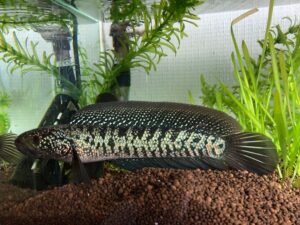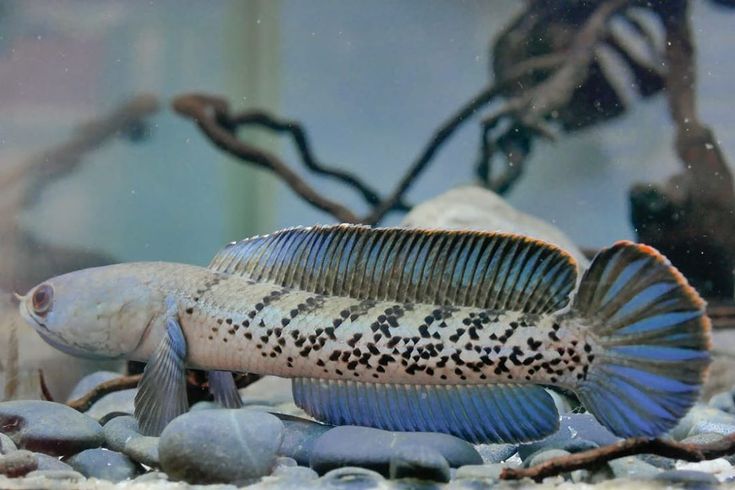Table of Contents
- Girai Fish – गिराई मछली
- The Girai Fish (Channa punctata): A Resilient Freshwater Predator of South Asia
- Physical Appearance and Characteristics
- Natural Habitat and Distribution
- Feeding Habits and Behavior
- Breeding and Reproductive Behavior
- Cultural and Culinary Significance
- Economic Importance
- Threats and Conservation Concerns
- Conclusion
Girai Fish – गिराई मछली
The Girai Fish (Channa punctata): A Resilient Freshwater Predator of South Asia

The Girai fish, known scientifically as Channa punctata, is a well-known freshwater species native to South Asia. It is often called the spotted snakehead due to its elongated body and the distinct dark spots scattered across its olive-green skin. Found primarily in countries like India, Bangladesh, Nepal, and Sri Lanka, this fish is especially common in the northern and eastern regions of India, including states such as Uttar Pradesh, Bihar, Jharkhand, and West Bengal. Known locally by various names such as Girai, Mural, or Saap, it holds ecological, cultural, and economic significance in many communities. This article explores the biology, behavior, habitat, culinary uses, and the conservation concerns associated with this versatile fish species.
Physical Appearance and Characteristics
The Girai fish has a long, cylindrical body that typically ranges between 30 to 45 centimeters in length, although some individuals can grow larger under ideal conditions. Its coloration is primarily olive-green or brownish, with scattered black or dark brown spots on its body and fins. These spots provide effective camouflage, allowing it to blend seamlessly with underwater vegetation and muddy riverbeds. It has a large, flat head and a broad mouth equipped with sharp teeth, well-adapted for its predatory lifestyle.
The fish also features a long dorsal fin and anal fin that extend along much of the body, giving it the flexibility to move through water with stealth and speed. A notable feature of the Girai is its accessory breathing organ. This allows it to breathe atmospheric oxygen, enabling it to survive in low-oxygen or stagnant water conditions where many other fish would not thrive.
Natural Habitat and Distribution
Channa punctata is widely distributed across freshwater systems in South Asia. It inhabits a variety of environments, including rivers, ponds, lakes, marshes, swamps, and irrigation canals. During the monsoon season, it is often found in flooded agricultural fields and temporary water bodies.
One of the main reasons for its widespread distribution is its ability to survive in adverse environmental conditions. Thanks to its air-breathing capability, it can live in shallow, muddy waters and even survive short periods out of water by breathing air. This makes the Girai an incredibly resilient species that adapts well to environmental fluctuations, including droughts or changes in water quality.
Feeding Habits and Behavior
The Girai fish is a carnivorous predator, feeding primarily on smaller fish, insects, crustaceans, tadpoles, and other aquatic invertebrates. It is an opportunistic feeder, often lying motionless in vegetation or near the bottom of the water body before ambushing its prey. Its large mouth and sharp teeth make it an efficient hunter.
Girai fish are mostly nocturnal, meaning they are more active during the night. During daylight hours, they tend to hide among aquatic plants, submerged roots, or rocks. Their behavior plays an important role in the aquatic ecosystem by controlling the population of smaller organisms, which helps maintain ecological balance.
Breeding and Reproductive Behavior
One of the most fascinating aspects of the Girai fish is its breeding behavior. The species is a mouthbrooder, meaning that after the female lays eggs and they are fertilized, the male takes them into his mouth to protect them from predators. The male holds the eggs and newly hatched fry in his mouth until they are strong enough to swim and survive on their own.
This unique form of parental care increases the survival rate of the offspring, offering protection during their most vulnerable stage of development. Girai fish usually breed during the monsoon season when water levels rise and environmental conditions become favorable for reproduction.
Cultural and Culinary Significance
In many parts of India, particularly in the eastern and northeastern regions, Girai fish is not only a source of nutrition but also a part of culinary tradition. It is especially popular in states like Jharkhand, Bihar, and West Bengal, where local dishes feature the fish in fried or curried forms.
In Jharkhand, for example, Girai fish is often cleaned, marinated in turmeric and salt, and then shallow-fried until it develops a crispy texture. It is served with rice or lentils and is considered a seasonal delicacy, especially enjoyed during the monsoon when the fish is abundant in local rivers and ponds. Its firm texture and mildly sweet flavor make it a favorite among fish lovers. The fish is also believed to be rich in nutrients, including protein, omega-3 fatty acids, and essential minerals.
Economic Importance
Girai fish contributes significantly to the livelihoods of small-scale fishers across India and neighboring countries. It is commonly sold in local markets, both fresh and dried, and fetches a decent price due to its popularity and taste. Smallholder fishermen often rely on the seasonal catch of Girai fish to support their families, particularly in rural areas.
Due to its resilience, the species is also considered suitable for low-cost aquaculture or backyard fish farming. Farmers and fishers can cultivate it in ponds, tanks, or waterlogged fields with minimal inputs, making it an ideal candidate for income generation in economically challenged regions.
Threats and Conservation Concerns
Although the Girai fish is currently widespread and not considered endangered, several environmental and human-made threats could affect its long-term survival. These include:
- Water Pollution: Runoff from agriculture, industrial waste, and untreated sewage can degrade water quality, affecting the health and reproduction of aquatic species.
- Overfishing: In some areas, the fish is caught extensively during its breeding season, which may impact its reproductive success.
- Habitat Destruction: Urbanization, dam construction, and land-use changes reduce the availability of natural habitats.
- Climate Change: Rising temperatures and erratic rainfall patterns can disrupt aquatic ecosystems and alter breeding cycles.
Sustainable fishing practices, community awareness, and habitat conservation efforts are essential to ensure the continued availability of Girai fish in the wild. Measures like seasonal fishing bans during breeding periods, pollution control, and the promotion of eco-friendly aquaculture can go a long way in protecting this valuable species.
Conclusion
The Girai fish (Channa punctata) is a fascinating species that holds ecological, economic, and cultural importance in South Asia. Its adaptability, unique breeding behavior, and resilience to harsh environments make it an essential part of the freshwater ecosystems it inhabits. At the same time, its culinary value and role in supporting rural livelihoods underline its broader significance to human communities. While the species is currently stable, ongoing environmental challenges highlight the need for awareness and conservation to ensure that future generations can continue to benefit from this remarkable fish. With proper stewardship, the Girai fish can remain a thriving component of both natural and human systems for years to come.
Here is more information about many species also visit Hindistories24.com in facts category you will amaze.
Which Fish is good for a home decor Follow link
Whenever feel low in any situation visit our youtube channel @Storiesbygulabgautam to get motivated
Thank you for visit
Jai Hind.
